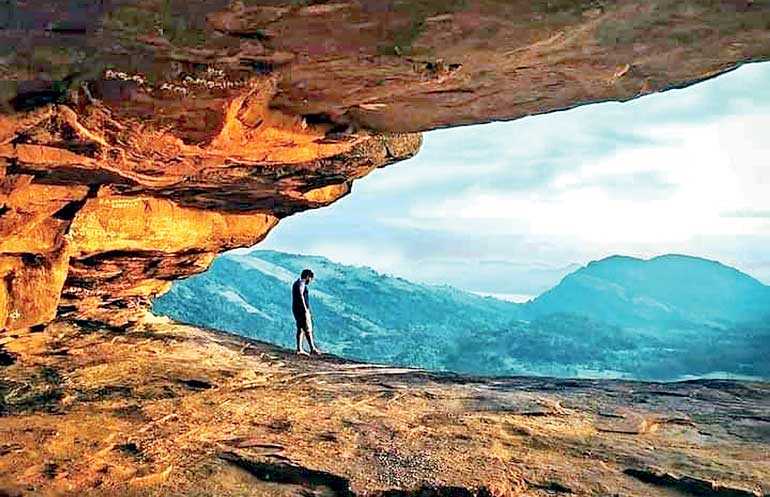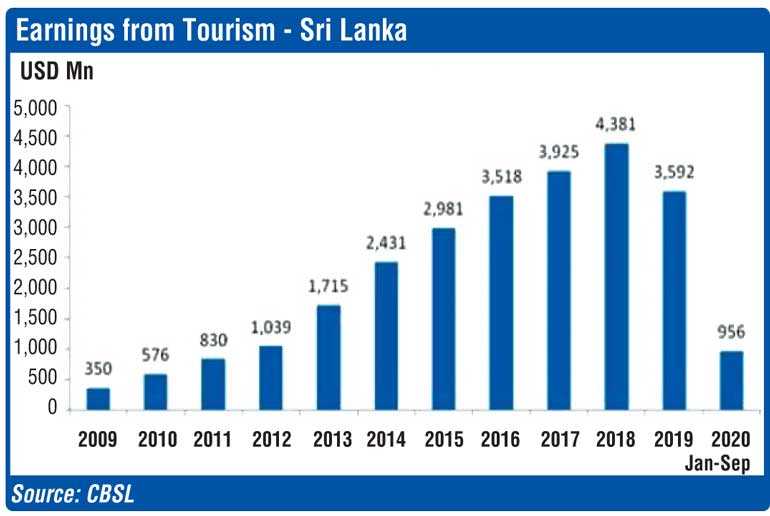Monday Nov 17, 2025
Monday Nov 17, 2025
Tuesday, 12 January 2021 01:14 - - {{hitsCtrl.values.hits}}

Sri Lanka opens its doors to tourism on the ‘bio bubble’ concept
Let’s accept it, Sri Lanka was essentially a closed market for the last nine months. Restrictions on imports and an embargo on tourism, for that matter total arrivals, required State approval. The movement of people was carefully monitored in essence, almost like North Korea. I am sharing this analysis in a good sense, not in a negative manner. Let’s also accept that this is the new normal in many countries around the world.
Money or bodies 
When President Trump refused to declare a lockdown many of us were questioning his decision, we see that today we in Sri Lanka are practicing a similar doctrine.
There are over 45,000+ confirmed COVID-19 cases with 200 plus fatalities at 0.45% mortality rate, which can be essentially due to the second wave accounting for 41,000 cases and 192 fatalities. The 0.45% mortality rate means that we can reliably forecast 100 deaths in the next month or so in Sri Lanka.
In this backdrop the new decision by the Sri Lankan Government is to open the doors for schools to begin, reopened the cinemas, social events can invite up to 300+ guests in the hospitality industry. But the new normal behaviour has to be practiced – wearing a mask, social distance, wash your hands as often possible and checking your temperature. On a separate note Professor Neelika Malavige advocates that keeping your immunity high is very important to fight the COVID-19 virus.
If one were to summarise, look after yourself and make sure you are not part of the statistics on the mortality front but you must be part of “ticking the economy”. In essence the decisions today will be a balance between ‘money and bodies’.
England’s new rules
Whilst the reality in Sri Lanka is as above, we see a totally different approach to managing the virus coming into play in the UK. As per the address of the Prime Minister of UK Boris Johnson yesterday, he announced that given the spread of the new mutant virus that has increased the spread rate by 30% in UK and the mortality rate jumping by 20% a total lockdown will come to play with immediate effect.
The new mutant virus has to date diffused itself to over 27 countries across the world which means that the UK decision will be a test market to the world on how to manage the new challenge. The decision include all primary and secondary schools to be closed to almost all pupils, and people and all are instructed to stay at home. Northern Ireland, Scotland and Wales are also under lockdown, with schools in Scotland closed until at least the end of January is what the early reports emerging.
The new rules in UK
Apart from the above stipulation the Government has detailed the key pickups to the people. Work or volunteering is allowed if staying at home is impossible. This includes work in someone else’s home, such as that carried out by social workers, nannies, cleaners. Exercising is allowed outdoors but limited to once a day. This includes meeting one other person from another household in an open public space to exercise. Shopping for essentials and medicines is allowed. Children can also move between separated which given the stringent controls that have come to play due to the mutant virus.
Sri Lanka opens – 23 January?
In this backdrop Sri Lanka opens its doors to the world with the opening of the airport on 23 January. The concept to be practiced is called the ‘bio bubble concept’. Whilst this can be practiced in the Maldives given the tourist islands are cut away from the main living island by its inhabitants, Male, it might be tougher to implement in a country like Sri Lanka.
I guess the decision will hinge back on the theme ‘money or bodies’. With almost 300,000 people directly dependent on this industry and the loan repayment that will come to play in the near future, there is no option but to open the doors to tourism. With no clear roadmap on the vaccination program either by the private sector or the public sector at large, I guess herd immunity is the basis for survival at a macro sense.
Trade tourism?
In this backdrop the best option is to recalibrate the country; given the downgrade by the rating agencies Fitch, S&P and Moody’s it will be best to focus on driving up trade and investment. For this we must take some decisive decisions which includes the recalibrating of ‘Brand Sri Lanka’.
At the consultation workshop of the travel industry on the Bay of Bengal Initiative for Multi-Sectoral Technical and Economic Cooperation (BIMSTEC) on Tourism Strategy staged at the Ministry of Tourism in Sri Lanka it was revealed that the BIMSTEC countries account for trade around $ 515 billion whilst as at now is only at $ 21 billion.
BIMSTEC – $ 515 billion?
The BIMSTEC countries consisting of Sri Lanka, India, Bhutan, Nepal, Thailand, Myanmar and Bangladesh currently register around 58 million visitors with a revenue earning of 100 billion dollars. The potential for tourism only in the BIMSTEC countries is estimated at 121 billion dollars. A point to note is that Sri Lanka’s best performance was $ 4.3 billion way back in 2018. On a trade from the overall potential of BIMSTEC countries in driving trade is at around $515 billion at a GDP growth estimate of 6% in the years to come. I guess Sri Lanka must latch on to this big picture if we are to ride the wave in the years to come.
Research reveals that the ‘bio bubble’ theory of tourism came to being some years back during the SARS virus that penetrated the South East Asian countries. The strategy adopted and diffused in the market at that time was to move to a multilateral approach to destination marketing from a more bilateral approach like what we are practicing as at now with Ukraine. I guess it will be interesting to study this model and check the implementation modalities that helped the South East Asian countries recover from the downturn.
Vaccination – India upbeat
Whilst the world is upbeat on the launch of many vaccines, the reality is that at the current speed of implementation the seven billion plus people to be vaccinated will take 10 plus years.
We also have to note that the physical distribution of the product will require infrastructure investment, support and training. Sri Lanka will require around two hundred million dollars to vaccinate the 21 million population. In other words around forty billion rupees. This will require the support from private sector and entities like Rotary for sure, based on the immunisation program like polio.
I guess time will give more clarity but we must watch the development program in place in India for the vaccine drive. It’s a case study that we can replicate. It’s a combination of supply chain efficiency based on the market need.
Next steps
Whilst many models will be tested out this year by different countries, be it in tourism, trade and the vaccination program that we must get linked to, if we do not get linked we will be lost out from the development arena.
The fact remains that we will have to be open to ideas and the limitations that it will throw out in different countries. We have to accept that the Maldives model cannot be replicated in any other country even if it’s an island destination. Let’s not forget that the virus we are dealing with has moved the whole world to a recession.

(Dr. Rohantha Athukorala heads the leading brand mapping Artificial Intelligence company Clootrack – Sri Lanka, Maldives and Pakistan. The thoughts are strictly his personal views.)